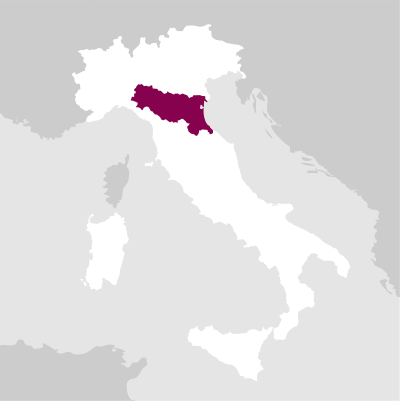At xtraWine, we are proud to offer a wide selection of Emilia Romagna wines. From the full-bodied reds to the crisp whites, we have something for every palate. Our Emilia Romagna wines are carefully selected from the best wineries in the region to ensure the highest quality and authenticity. On xtraWine.com, you can find a range of Emilia Romagna wines, including:strong>Lambrusco: A sparkling red wine that is a regional specialty of Emilia Romagna. Sangiovese: The most widely planted red grape variety in Emilia Romagna, producing full-bodied and complex wines. Albana: A white grape variety that is used to produce crisp and refreshing white wines. Pignoletto: Another white grape variety that is used to produce dry and aromatic wines. On xtraWine, we offer competitive prices and convenient delivery options, so you can easily get your hands on some of the best Emilia Romagna wines. Browse our selection today and discover the rich and diverse world of Emilia Romagna wine.
The wines of Emilia Romagna: The wines of Emilia Romagna at discounted prices only on xtraWine
An error occurred while loading the products.
Reload the products
Reload the products
No products found
Use fewer filters or remove all
Use fewer filters or remove all

Emilia-Romagna
Emilia-Romagna
| Country name | Italy |
| History | The region was known to be part of the Gallia Cisalpina. In the 2nd century BC, the Roman Empire decided to expand their network of roads toward the Pianura Padana, which had been subject to numerous attacks and pressures from the North. To this end, a road that connected Rimini to Piacenza was built, and it was called Aemilia. The territory surrounding this road was addressed as "Aemilia" territory.In the 6th century AD, the Romans lost this territory, which was later divided between the Lombards and the Byzantines. These two areas were called, respectively, Longobardia and Romania.The area of the current Romagna (Romania) was under Byzantine rule. The area which is currently known as Emilia comprised of some of the territories of the Aemilia road, and was called Longobardia. This area of the region only got the original name back (Aemilia) with the unification of Italy, when the grandeur of the Roman Empire wanted to be celebrated. In 1947 the two areas became one and the region was assigned the name of Emilia-Romagna. |
| Perc hill | 27 |
| Perc mountain | 25 |
| Perc plain | 48 |
| Soil and climate | The climate is characterized by hot and sultry summers and harsh winters with abundant rainfall and frequent days of fog and frost. Along the Adriatic coast, the climate is milder; heavy rains and snow fall on the mountains, while in the plains it snows, but the snow melts immediately.Emilia-Romagna is a predominantly flat region; its territory for almost 50% consists, in fact, of the Po Valley, while in the west there are the Ligurian Apennines and Tosco Emiliano. The only important river is the Po. |
| Surface area | 22451 |
| Typical dishes | The great development of the cured meats and hams industry is dominated by Parma ham and Modena ham, both PDOs like Zibello culatello, Piacenza salami, coppa and pancetta. Equally tasty are the bow of culatello and the fiocchetto, obtained from the pork leg, as well as the Langhirano raw ham, the Coppa di Parma, the pancetta canusina, the mortadella di Bologna PGI. An essential element common to Emilia and Romagna is the egg pasta, or rather the pastry, which the housewives prepare strictly by hand, working for the dough of flour and eggs for a long time. It is then reduced to tagliatelle, tagliolini, squares, pappardelle, lasagne and maltagliati, depending on the size, and then seasoned with different sauces, or used for tasty and renowned stuffed pasta. Among the desserts of particular originality are the amaretti di San Geminiano, typical of Modena and softer than those of Piedmont, the bolognese donut, the ricotta tart, rather firm fruit or custard, jam and tortellini of jam, sweets typical of carnival days. |
| Typical products | The famous wine of the region is Lambrusco, the sparkling red of the Modena area, above all of Sorbara. The reputation of Emilia Romagna as a wine producer is constantly on the rise. The hills around Bologna, the Colli Bolognesi, now give some respectable cabernet, merlot and sauvignon blanc. The Albana Romagna was the first wine to win the DOCG in 1986. Obtained from the homonymous vine, Albana can be more or less sweet, but in reality the only interesting versions come from the hills around Forlì. The red of the area is more reliable than Albana: the Sangiovese di Romagna. This wine can be weakened by the intensive cultivation of the grapes, but also to be robust and quite sophisticated, so much so that some Sangiovese clones, highly appreciated by the demanding Tuscan producers, come from Romagna. |



